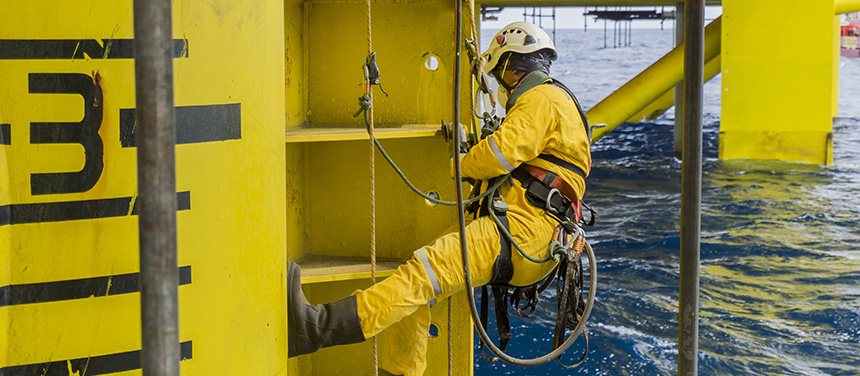
Our highly skilled technicians use the most up-to-date equipment and a range of industry proven non-destructive testing (NDT) techniques to identify and prevent flaws and ultimately increase the reliability of your assets. NDT should be ever-present from construction to decommissioning in evaluating critical assets. Our team is ready to tackle your projects with a comprehensive range of NDT solutions, tailored to your needs, including:
Dye Penetrant Testing
Dye Penetrant Inspection (DPI), also called Liquid Penetrant Inspection(LPI) or Penetrant Testing (PT), is a widely applied and low-cost inspection method used to locate surface breaking defects in all non-porous material (metal, plastic, or ceramics). The penetrant may be applied to all non-ferrous used instead for its subsurface detection capability.We can use LPI to detect casting, forging and welding surface defect such as hairline cracks, surface porosity, leaks in new products and fatigue cracks on in services components.
Magnetic Particle Testing
Magnetic Particle Inspection (MPI) is a non-destructive testing (NDT) process. We can use this type of test for detecting surface and slightly subsurface discontinuities in ferromagnetic materials such as iron, nickel, cobalt, and some of their alloys.
Radiographic Testing
Radiographic Testing (RT), or industrial radiography, is a non-destructive testing (NDT) method of inspecting materials for hidden flaws by using the ability of short wavelength electromagnetic radiation (High energy photons) to penetrate various materials.
Ultrasonic Testing
Ultrasonic Testing (UT) is a family of non-destructive testing techniques based on ultrasonic wave propagation on objects or materials tested. In most common UT applications, very short ultrasonic pulse waves with center frequencies ranging from 0.1-15 MHz, and sometimes up to 50 MHz, are transmitted into materials to detect internal defects or to characterize materials. A common example is the measurement of ultrasonic testing, which tests the thickness of the specimen, for example to monitor the pipe work corrosion. Ultrasonic testing can be performed on steel, metal, concrete, composite wood and other alloy materials.
Visual Testing
All method of Non-Destructive Examination (NDE) at some point fall back the most basic of inspection techniques is Visual Inspection. Whether performing a Liquid Penetrant, Magnetic Particle, reviewing radiographs of welds, observing an ultrasonic instrument’s scope, or evaluating eddy current signals, visual examination at some point comes into play in all methods of non-destructive testing.
VT now become included in other codes and standards that are considered mainstays of the inspection industry, such as the American society of mechanical engineers (ASME), the American society for testing material (ASTM), the American welding society (AWS) & National Aerospace standard (NAS-410).
